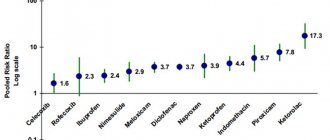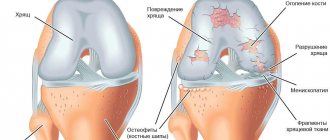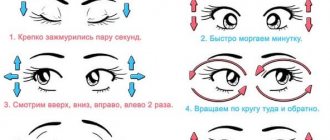It is a natural protective reflex through which the body removes excess phlegm, foreign bodies, and pollutants (dust, dirt, smoke). Physiologically, this process is a sharp, rapid, expiratory contraction of the respiratory muscles, aimed at cleansing the bronchial tree.
Cough is usually associated with diseases of the respiratory system, but this is not always the case; it can also occur with some diseases that are not related to the pathology of the respiratory system.
Based on the classification, we conditionally divide coughs by duration:
- if the cough lasts 3 weeks or less, then it is called acute
. - cough lasting more than 3 weeks is chronic
.
If we talk about the causes, acute cough occurs more often with colds, and the cause of chronic cough, as a rule, is a complex of diseases. In 25% of patients, chronic cough is usually associated with 2 causes, and in 3% there are three causes.
Cough with bronchial asthma
This is a disease that has different clinical manifestations, including a cough form. With this form of the disease, cough may be its only manifestation and the only complaint of the patient. However, adequately selected anti-asthma therapy brings a good treatment effect, which confirms the correctness of the diagnosis.
For bronchial asthma, basic therapy is prescribed, including inhaled corticosteroids and bronchodilators. Bronchodilators, in turn, can be divided into drugs that act for a short time and drugs that act for a long time. Doctors also have combination drugs in their arsenal to treat this disease.
Preventive actions
To prevent the development of attacks will help:
- ventilation of the room (getting rid of allergens, regulating temperature);
- wet cleaning;
- inclusion of honey, fruits and vegetables in the menu (a source of nutrients);
- giving up bad habits (primarily smoking);
- strengthening the body (physical activity, taking vitamins).
You can also use a technique such as hardening - this allows you to resist seasonal colds.
Cough due to postnasal drip
Cause of Drip syndrome
is a secretion that, when you have a runny nose, flows from the nasal cavity into the pharynx, its laryngeal part. The cough is reflexive in nature and appears as a result of mechanical irritation of the pharyngeal receptors. In this case, it is necessary to treat rhinitis that caused postnasal drip syndrome. And, of course, treatment depends on the genesis of this rhinitis. For non-allergic rhinitis, vasoconstrictors and antihistamines are prescribed. The combination of these drugs reduces swelling and mucus production. In the case of allergic rhinitis, glucocorticoids and cromoglycates in the form of a nasal spray are usually used.
The most common causes of chronic cough
Allergic rhinitis
, untreated non-allergic rhinitis and sinusitis.
This cough is caused by irritation of the nasopharynx with mucus coming from the nasal cavity. Chronic cough in this case is accompanied by constant nasal congestion. Asthma.
One of the most common causes of cough.
The severity of a chronic cough may increase during the cold season, after a cold or other illness. Heartburn.
The reflux of stomach contents into the esophagus and pharynx, characteristic of heartburn, causes irritation of the mucous membrane and leads to a constant cough.
Smoking.
Smoker's cough is a consequence of the development of
chronic bronchitis
, which affects most tobacco product users.
Most often, this cough occurs in the morning and is accompanied by active expectoration of mucus from the bronchi. Less common causes of chronic cough include benign and malignant lung tumors
, emphysema, the development of fungal infections of the respiratory tract,
tuberculosis
, and heart failure.
Chronic cough with chronic bronchitis
This disease is characterized by chronic inflammation of the airways and excess mucus production. Therapy for this chronic disease is aimed at reducing the formation of sputum and its effective removal from the bronchial tree, reducing the level of inflammation of the respiratory tract, and reducing bronchospasm. It is necessary to note the need to stop exposure to adverse factors (cessation of smoking, compliance with labor safety standards in hazardous industries).
Another disease in which cough is one of the important symptoms of the disease is bronchiectasis
. The disease is characterized by a chronic suppurative process in irreversibly changed (dilated, deformed) and functionally defective bronchi, mainly in the lower parts of the lungs. It is also accompanied by a violation of the drainage function of the bronchial tree and stagnation of sputum. The doctor makes a diagnosis by carefully collecting anamnesis and analyzing the data obtained as a result of the examination. Specialists perform endoscopic examination of the bronchi (videobronchoscopy), and also examine the chest organs using computed tomography.
It should be noted that chronic cough in bronchiectasis is a way to remove large volumes of sputum and does not require treatment outside of an exacerbation. In case of exacerbation of bronchiectasis, antibacterial therapy is indicated based on the results of sputum culture, as well as mucolytic (sputum thinning) and expectorant therapy, the purpose of which is to improve mucociliary clearance.
It is also necessary to mention chronic cough, which bothers the patient for a long time after suffering infectious diseases of the respiratory tract, for example: o.bronchitis, o.tracheitis and pneumonia. With a cough that continues after an infectious disease, laboratory and chest x-ray findings are usually normal. Usually, a cough of this kind stops on its own over time, however, in cases of protracted course, physiotherapeutic treatment, drainage massage, and nembulizer therapy are recommended.
Oncological diseases of the respiratory system can also cause chronic cough. To diagnose such dangerous diseases, the doctor uses anamnesis, a thorough examination of the patient, prescribes radiation methods, fibro- or video bronchoscopy, if necessary, a bronchial biopsy is performed followed by histological examination, sputum is examined using laboratory methods, etc.
Cough: the view of an otorhinolaryngologist
One of the most common reasons for visiting a therapist is a cough. Of course, medical history, physical, radiological and laboratory examination data are quite sufficient for making a diagnosis and planning treatment. However, often the standard course of treatment does not produce an effect; a persistent cough exhausts the patient and confuses the therapist: changing certain mucolytics, antibiotics and other medications does not relieve the cough. What should you think about? What causes of cough should be excluded?
Coughing is a protective mechanism designed to remove foreign matter or phlegm from the respiratory tract.
A cough is a voluntary or involuntary (reflex) jerk-like forced sonorous exhalation with spastically closed vocal folds (which is why the cough is accompanied by sound).
Receptors of the respiratory tract are divided into two types: irritant, responsive to mechanical thermal and chemical stimuli, located mainly in the proximal parts of the respiratory tract, and stimulated by various proinflammatory mediators, located more distantly. Irritation of receptors can occur not only upon contact with a foreign body, mucus, etc., but also due to inflammation in the mucous membrane of the larynx, trachea, bronchi, and irritation of receptors by chemical and temperature factors. Compression of the airways can also lead to mechanical irritation of the receptors in the mucous membrane of the airways. A cough can be provoked by irritation of branches of the vagus nerve outside the respiratory tract: the skin of the external auditory canal (the ending of the Arnold branch of the vagus nerve), the esophagus, the diaphragm, with an enlargement of the left atrium, etc. Such a cough, as a rule, is not beneficial, moreover, it injures the larynx . Various pathological conditions, including those requiring surgical treatment, occur in the larynx as a result of prolonged severe cough (angiomatous polyps, laryngeal air cysts, nonspecific granulomas, etc.). Cough can lead to the development of complications, both mild (weakness, headache, vomiting, urinary incontinence, sleep disturbance) and severe (spontaneous pneumothorax or pneumomediastinum, fainting, rib fracture).
Among the causes of cough, one must remember such diseases of the cardiovascular system as left ventricular failure, pulmonary embolism; gastrointestinal tract (GIT) - gastroesophageal reflux disease (GERD), sliding hiatal hernia, dumping syndrome. Some metabolic disorders may be accompanied by a cough (diabetes mellitus (DM), gout), cough is a side effect of taking certain medications (angiotensin-converting enzyme inhibitors, diuretics, antihypertensive drugs, psychotropic, antihistamines), and can be psychogenic. However, according to Favre L. et al. [8] in 90% of patients with chronic cough, the causes of the symptom are the flow of mucus down the back wall of the pharynx, GERD, and bronchial asthma (BA). According to his data, 25% of patients have two or three causes of cough at the same time. Similar data are presented by Holmes RL and Fadden CT [7]. In pediatric practice, the share of chronic cough associated with pathology of the upper respiratory tract (URT) accounts for 20.3%, and the share of GERD is 4.6% [9]. When carrying out a differential diagnosis, it is important to take into account not only an allergic history, bad habits, concomitant somatic pathology, but also heredity, occupational hazards, the time of cough occurrence during the day, seasonality, dependence on food intake, and body position.
A cough lasting less than three weeks is considered acute; a cough lasting from 3 to 8 weeks is considered subacute; and a cough lasting more than 8 weeks is considered chronic. The success of drug therapy for cough is directly related to the accuracy of identifying its causes. Thus, Irwin RS and Curley FJ [10], analyzing the effectiveness of cough treatment according to many studies, indicate that with a differentiated choice of treatment tactics taking into account the causes of cough, the effectiveness of therapy ranges from 93% to 97%.
Often a persistent, unsatisfying cough without sputum is an early symptom of a tumor of the trachea, the subvocal part of the larynx. Tumors of the subvocal larynx are less common than tumors of the vestibular and vocal larynx, occurring in approximately 2–4% [1, 2]. As a rule, the diagnosis is made when the tumor, reaching a large size, obstructs the lumen of the trachea or subvocal larynx, the patient develops suffocation, or when the tumor spreads to the vocal fold and develops persistent dysphonia. The prognosis of the disease entirely depends on the timing of diagnosis, since metastasis occurs quite early in the regional pretracheal lymph nodes, nodes of the deep jugular chain and anterosuperior mediastinum. Tumors of the subglottic larynx are usually radioresistant. Endoscopic surgery is possible only in the early stages of the disease. In fact, the only early symptom in patients with tumors of the subglottic larynx is a persistent, unsatisfying dry cough.
Over the past 3 years at the Department of Otorhinolaryngology with the clinic of St. Petersburg State Medical University named after. acad. I. P. Pavlova (St. Petersburg) tumors of the subglottic larynx were identified in 16 patients aged 19 to 78 years (7 men and 9 women). Histological examination revealed that in 12 cases the patients had papillomas, in 3 cases there was squamous cell carcinoma, and in one case there was granuloma. All patients had a severe cough, in 87.5% of cases there was a cough at night, in 62.5% of patients a coughing attack led to laryngospasm, suffocation, in 87.5% the cough was dry, in 50% the cough occurred during a change body position.
Interesting data from the anamnesis of this group of patients: the duration of cough before its cause was established ranged from 3 to 6 months, and during this time 8 patients were repeatedly consulted by an otolaryngologist, all patients were consulted by a therapist, a pulmonologist, including 5 people who were hospitalized for chronic obstructive pulmonary diseases (COPD), asthma, and 4 people constantly received inhaled corticosteroids without effect. These data are all the more surprising since even a small tumor of the subglottic larynx can be seen during fibroscopic examination, and the modern level of development of laser endoscopic surgery allows such patients to be successfully treated. The possibilities of laser endoscopic surgery for laryngeal tumors and photodynamic therapy can be successfully implemented only in the early stages of the disease, when there is no invasion of cartilage or metastasis.
All patients in the presented group were successfully operated on using a surgical laser in our clinic. In 10 cases of papillomas of the subglottic larynx and in 3 cases of cancer, photodynamic therapy with domestic photosensitizers was performed. With follow-up periods ranging from 3 years to 16 months, remission was observed in 3 patients with cancer of the subglottic larynx. It is important to note that both at the preoperative stage and in the postoperative period, the only way to relieve a painful cough in patients with tumors of the subglottic larynx is antitussives, for example, the effective and safe drug Sinekod. This drug effectively relieved cough in all patients in our group at the stage of preoperative examination. In the postoperative period, Sinekod was prescribed to all patients to prevent cough, which can cause premature fibrin rejection and bleeding.
Of course, the most common causes of cough from the ENT organs are inflammatory diseases of the upper respiratory tract, acute respiratory viral infections (ARVI), adenoiditis, acute or chronic sinusitis, pharyngitis, acute or chronic laryngitis.
In ARVI, cough occurs due to damage by the virus to the respiratory epithelium with the development of desquamation of the surface layers, dilation of microvessels of the mucous membrane, hypersecretion of glands, hyperreactivity of the afferent sensory endings of the respiratory epithelium under the influence of inflammatory mediators [6, 12]. It is these changes in the mucous membrane that explain such symptoms of ARVI as sneezing, sore throat, and unproductive “obsessive” cough in the first days of the disease. Therefore, for the treatment of cough during ARVI, it is appropriate to use non-steroidal anti-inflammatory drugs, first generation antihistamines, and antitussive drugs. A good combination drug for the treatment of cough against the background of ARVI is TheraFlu: a combination of paracetamol, pheniramine - a first generation antihistamine, phenylephrine and vitamin C. Paracetamol has a pronounced anti-inflammatory effect. Pheniramine, having an antihistamine effect, relieves hyperreactivity of the mucous membrane of the upper respiratory tract and reduces the amount of discharge, itching and irritation in the nose, sore throat, sneezing, and cough within an hour after taking the drug. Phenylephrine, being an effective systemic vasoconstrictor, relieves nasal congestion within a few minutes, reduces the amount of secretions, including the flow of mucus down the back wall of the pharynx, which can significantly reduce cough.
In the first days of acute respiratory viral infection, hypersecretion of the mucous glands of the respiratory epithelium is observed; additional administration of expectorant drugs, especially those acting on the basis of the gastropulmonary reflex, seems unjustified. Of the antitussive drugs, preference should be given to the drug Sinekod, which selectively affects the cough center without causing respiratory depression, does not have a hypnotic or analgesic effect and does not cause drug dependence, and is well tolerated by all categories of patients.
Tracheal secretion is a multicomponent colloidal solution, including a liquid phase - a sol, which covers the apical surfaces of mucociliary cells, and an insoluble phase - a gel - macromolecular glycoprotein complexes of mucins linked by disulfide bridges. The formation of secretion is a protective mechanism that provides air humidification and the evacuation of foreign particles, bacteria and viruses. For the physiological release of mucus from the lower respiratory tract (LRT), vibrations of the cilia of the epithelial cells of the mucous membrane of the bronchi and trachea and the corresponding viscoelastic properties of the mucus are necessary. Normally, the secretion of the tracheobronchial tree should have low viscosity and good fluidity, which depends on the ratio of water and glycoproteins that make up the mucus. An increase in secretion viscosity may be associated with dehydration or inflammation, accompanied by overproduction of thick mucus poor in sialomucins by goblet cells. With ARVI, mucociliary clearance is disrupted, and as the disease progresses, an additional mechanism for evacuation of mucus is activated to evacuate tracheobronchial secretions - coughing. To implement this, in some cases it is necessary to reduce the viscosity of the secretion, the prescription of mucolytics is indicated, as a rule, this stage of therapy can be determined by auscultation.
Acute laryngitis often accompanies acute respiratory diseases (ARI), although in addition to viral etiology, the cause of acute laryngitis can be smoke irritation, acid reflux from the stomach, or sudden temperature exposure. Cough in acute laryngitis does not have the function of evacuating sputum and is associated with inflammation of the mucous membrane, including in the area of receptor zones. The use of antitussive drugs can not only reduce cough, but also protect the larynx from cough that injures the mucous membrane. Treatment of acute laryngitis may include oral TheraFlu; the ingredients in this anti-inflammatory combination drug effectively fight inflammation in the mucous membrane. Inhalations of Cycloferon, alkaline solutions, corticosteroids, and in some cases an antibiotic can be successfully used. The use of the antitussive drug Sinekod orally is effective.
Sinusitis, adenoiditis, and allergic rhinitis may be accompanied by an obsessive, unproductive cough, which occurs when the reflexogenic zones of the pharynx and hypopharynx are irritated by mucus or pus flowing down the back wall. Postnasal drip syndrome, alone or in combination with other diseases, is one of the common causes of acute or chronic cough, and the cough associated with it often occurs at night: during the day, a person reflexively swallows the mucus that flows into the throat, which also irritates the patient. When the inflammatory process is localized in the posterior groups of the paranasal sinuses, nasopharynx, cough and mucus drainage along the back wall of the pharynx may be the only manifestations of the disease. The cough in this condition is formally dry, since there is no accumulation of sputum in the trachea and bronchi, but the patient perceives it as productive. In clarifying the causes of mucus flowing down the posterior wall, not only endoscopy of the nose and nasopharynx is important, but also computed tomography (CT) of the paranasal sinuses; often it is isolated sphenoiditis or ethmoiditis that causes mucus drainage and coughing. In the treatment of such a cough, the main thing is sanitation of the nasal cavity and sinuses; in addition to standard methods of treating the disease, salt rinsing of the nasal cavity has a good effect; the effect of local therapy can be considered as an additional diagnostic criterion, forcing a decision on CT scanning of the paranasal sinuses in the absence of endoscopic symptoms.
Persistent constant or paroxysmal cough with or without viscous sputum is often observed with chronic laryngitis. The patient talks about the occurrence of coughing attacks, accompanied by suffocation, or coughing to the point of spasms in the throat, to vomiting, to involuntary urination. Such a cough exhausts, exhausts the patient, and deprives him of sleep. Patients note constant or transient hoarseness, often a decrease in the pitch of the voice, and increased fatigue. A typical complaint is a sore throat with vocal strain.
The larynx, being an organ that separates the alimentary and respiratory tracts, is exposed to many adverse environmental factors, infectious agents, food irritants, etc. Chronic laryngitis occurs under the influence of a number of exogenous factors: prolonged exposure to cold or hot air, smoking, alcohol , contact with dust, shavings, toxic substances in the air, with prolonged voice overexertion, etc. Chronic laryngitis can also occur as a result of chronic diseases of other organs: diseases of the nose and paranasal sinuses, pathology of the urinary tract, gastrointestinal tract, cardiovascular system, endocrine disorders systems, etc. Inflammation in the larynx is a common problem that leads not only to dysfunction of the organ (dysphonia, dyspnea), accompanied by cough and many other symptoms, but also masks neoplastic processes. Predisposing to the chronic course of laryngitis are occupational hazards (smoke in the room, hot workshops, dust, chemical reagents in the air), voice overload. Moreover, we are not talking about voice professionals, as a rule, their voice is “trained” and resistant to stress, but about those individuals who are forced to shout a lot, shouting above the noise in the workshop or on the sports field.
The ratio of men and women suffering from chronic laryngitis is 2:1 [5]. In recent years, there has been a change in the trend toward a predominance of women, which is likely due to an increase in the number of women smoking. Thus, according to our data, based on an analysis of 560 cases of chronic laryngitis who were treated at the Department of Otorhinolaryngology with the clinic of St. Petersburg State Medical University named after. I. P. Pavlova (St. Petersburg), it turned out that women make up 61.3% of patients. On the other hand, women are more likely to consult a doctor for persistent dysphonia, since hoarseness is more detrimental to a woman’s image than a man’s. The role of smoking in the formation of chronic laryngitis is recognized by all. However, in our study, only 38.7% were smokers. Smoking is not the only factor in the development of chronic laryngitis, but during microbiological examination of the laryngeal mucosa, associations of microorganisms, including pathogenic ones, are more often sown in smokers than in non-smokers.
According to our data, associations of opportunistic and pathogenic cocci were identified on the mucous membrane of the larynx in patients with chronic laryngitis. In most cases, the reservoir of bacterial flora is foci of infection in the dental system and palatine tonsils. In the group of examined patients with chronic laryngitis, chronic tonsillitis was detected in 89% of cases, and in 20% of cases it was decompensated. On the other hand, out of 560 patients with chronic laryngitis, only 6% of cases had a history of tonsillectomy. Thus, the generally accepted opinion that after tonsillectomy inflammatory diseases of the larynx occur more often is incorrect; rather, foci of infection in the upper respiratory tract contribute to the development of inflammatory pathology of the larynx.
The main pathogenetic mechanisms for the development of inflammatory changes in the larynx include pharyngolaryngeal reflux, which can be accompanied by obvious clinical manifestations of the gastrointestinal tract or be asymptomatic. From a pathophysiological point of view, GERD is an acid-dependent disease that develops against the background of a primary disorder of the motor function of the upper digestive tract. Physiological reflux, that is, the reflux of acidic gastric contents into the esophagus, also occurs in healthy people. It occurs rarely, usually after eating, has a short duration, and never appears during sleep. The concept of pharyngolaryngeal reflux is broader than GERD. In addition to GERD, its development is caused by some functional reasons (lack of tone of the upper esophageal sphincter) and purely behavioral characteristics (overeating before bed, working in a bent position (for example, in the garden) after eating).
Cough with GERD is caused by a reflex due to irritation of the endings of the vagus nerve, micro- or macroaspiration of gastric contents, impaired motility of the esophagus and cardiac sphincter. Often, cough is the only symptom of GERD (in 50–75% of patients according to S. Yu. Tereshchenko [4]). Objective diagnosis of reflux esophagitis and GERD can be realized by daily monitoring of pH and manometry of the esophagus with registration of the temporal relationship between reflux and coughing episodes. However, these studies are not reliable in predicting the effect of antireflux therapy. According to Joniau S. et al. pH monitoring of the esophagus does not justify its purpose: it leads to overdiagnosis of GERD [11]. An analysis of all research papers devoted to pH monitoring of the esophagus in patients with extraesophageal manifestations of GERD, published in the world scientific press for the period from 1991 to 2006, was carried out. The authors concluded that although pH monitoring is important in the diagnosis of GERD, and the reflux of acidic stomach contents into the laryngopharynx plays an important role in the pathogenesis of chronic laryngitis, the importance of the method is greatly overestimated. Important information about the condition of the mucous membrane of the esophagus and stomach, the function of the sphincters of the esophagus and stomach can be obtained with fibrogastroduodenoscopy, however, conducting the study against the background of an exacerbation of chronic laryngitis can significantly increase the manifestations of the disease. If there is a high probability of the role of pharyngolaryngeal reflux in the formation of the disease in the patient, based on the history, complaints, and endoscopy of the larynx, it is more advisable to conduct a trial course of antireflux therapy, the effectiveness of which will confirm the assumption about the role of gastrointestinal disease in the formation of cough. Holmes RL and Fadden CT [7] believe that GERD as the cause of chronic cough should be determined by clinical symptoms and the effectiveness of a trial course of treatment with proton pump inhibitors.
According to our data, in 46.3% of cases in patients with chronic laryngitis, organic pathology of the gastrointestinal tract was identified, which is accompanied by the reflux of acid into the esophagus and laryngopharynx. In reality, the number of patients with chronic laryngitis in whom reflux syndrome plays a role in the pathogenesis of the disease is much larger. In our study, the examination did not reveal organic gastrointestinal diseases in 20% of patients, but the endoscopic picture of the larynx was consistent with reflux syndrome, and attacks of coughing and laryngospasm at night were associated with a violation of the diet, eating regimen, and overeating in the evening [3].
With diabetes, dryness of the mucous membrane of the respiratory tract and impaired microcirculation appear already in the early stages. According to our data, diabetes occurs in 29% of patients with chronic laryngitis. Often, it is the otorhinolaryngologist who refers the patient for a blood sugar test after seeing dry, inflamed, thickened mucous membrane of the pharynx and larynx. It is generally accepted that atrophic laryngitis develops with diabetes. According to the results of our study, in most cases, patients with carbohydrate metabolism disorders had catarrhal or hyperplastic laryngitis. This is probably due to the fact that in most cases a patient with chronic laryngitis has several reasons contributing to the development of the disease.
The cough that accompanies NPD diseases has a traumatic effect on the vocal folds and aggravates the inflammation of the laryngeal mucosa. Chronic bronchitis and bronchiectasis can contribute to sputogenic (through sputum) infection of the larynx. Many patients with asthma constantly use inhalers, long-term use of which negatively affects the condition of the mucous membrane of the vocal folds. Hormonal inhalers contribute not only to the development of atrophic laryngitis, but also to the appearance of laryngeal mycoses. In our study, in 18.5% of cases in patients with chronic laryngitis, chronic diseases of the urinary tract were identified.
With hypothyroidism, water-salt metabolism is disrupted, which leads to expansion of the interstitial fluid sector, hyponatremia, and the appearance of swelling of the skin and mucous membrane, including in the larynx. Diseases of the thyroid gland, leading to the development of hypothyroidism, are accompanied by persistent changes in the vocal folds (thickening, rounded edge, pasty mucous membrane), which entail persistent changes in the voice.
So, in many cases, chronic laryngitis can be regarded as a secondary disease, resulting from a chronic somatic disease. When choosing treatment tactics, it is necessary to carefully analyze concomitant diseases and take measures to treat them.
Anti-inflammatory therapy for diseases of the larynx has in many ways a diagnostic value: the inflammatory background, masking organic changes in the mucous membrane of the larynx, does not allow an accurate diagnosis to be made or the extent of the required surgical treatment to be assessed. The anti-inflammatory course of treatment should be intensive and short; only in this case can one count not only on relief of the symptoms of the disease, rapid restoration of laryngeal functions, but also on timely detection of surgical diseases of the larynx.
89% of patients with exacerbation of chronic laryngitis in our study had complaints of severe cough. In 34% of cases, the cough occurred mainly at night. In 40% of patients, a coughing attack led to laryngospasm and suffocation. In 54% of cases, patients were bothered by a dry cough, only 28% had a productive cough [3].
Considering that in case of laryngitis, the cause of cough is not the presence of sputum, but direct inflammation of the mucous membrane in the area of reflexogenic zones, the prescription of antitussive drugs is indicated. Which drug should I choose? The antitussive agent must have a wide therapeutic range between effective and toxic doses, selectively affecting the cough center without causing respiratory depression. Such a drug is Sinekod. Butamirate citrate, the only active ingredient in the drug Sinecod, is the main active ingredient for cough suppression, which is neither chemically nor pharmacologically related to opium alkaloids. Sinekod is offered in three forms: drops for children, syrup for children and adults.
Pharmacologically, butamirate citrate is a centrally acting antitussive drug. Both chemically and morphologically, butamirate citrate differs from opiate alkaloids such as codeine or morphine derivatives. The central action of butamirate citrate has an exclusively antitussive effect - the drug does not have a central analgesic effect and does not affect breathing. The drug has nonspecific anticholinergic and bronchospasmolytic effects that facilitate respiratory function. Sinecode is quickly and completely absorbed after oral administration, the maximum concentration is reached after 1.5 hours, and is 95% bound to blood plasma proteins. The drug has no cumulative effect and is excreted through the urinary tract. The antitussive effect of Sinekod begins after 30 minutes and lasts for 6 hours. The drug was well tolerated and highly safe. It can be used in children older than two months and in older people. It is important that it does not affect gastrointestinal motility and can be used in patients with diseases of the digestive system. Does not have a sedative effect.
We used Sinekod at the beginning of treatment in 28 patients with severe exacerbation of chronic laryngitis, with unproductive paroxysmal cough. All patients showed a good antitussive effect, which significantly affected the general well-being of the patients: many of them slept well for the first time after starting treatment with the disease. In most cases, a four-day course at a standard therapeutic dosage was sufficient. There were no side effects when using the drug in the group of patients under discussion.
Thus, for the rapid relief of non-productive severe cough during exacerbation of chronic laryngitis, the use of the drug Sinekod, which is an effective, safe antitussive drug, is indicated.
Identification of the pathogenetic mechanisms of the development of chronic cough in each specific case and concomitant pathology allows for a differentiated approach to the choice of treatment tactics and achieving stable remission.
Literature
- Ogoltsova E. S. Malignant tumors of the upper respiratory tract. M.: Medicine, 1984. 223 p.
- Paches A. I., Olshansky V. O., Lyubaev V. L., Tuok T. Kh. Malignant tumors of the oral cavity, pharynx and larynx. M.: Medicine, 1988. 303 p.
- Ryabova M. A., Nemykh O. V. Chronic laryngitis. Principles of pathogenetic treatment. St. Petersburg: “Dialogue”, 2010. 140 p.
- Tereshchenko S. Yu. Prolonged cough in children: issues of diagnosis and therapy // Consilium medicum. Pediatrics. 2010, No. 4, p. 18–27.
- Berliti S. Chronic Laryngitis, Infectious or Allergic: Head and Neck Pathology. Philadelphia: Churchill Livingstone; 2002: 319–335.
- Curley FJ, Irwin RS, Pratter MR et al. Cough and the common cold // Am Rev Respir Dis. 1988; 138:305–311.
- Holmes RL, Fadden CT Evaluation of the patient with chronic cough // Am Fam Physician. 2004, May 1; 69(9):2159–2166.
- Favre L., Dreher T. Leuenberder Chronic cough: practical aspects P // Rev. Med. Suisse. 2006, Nov 15; 2(87):2605–2609.
- Asilsoy S., Bayram E., Agin H., Apa H., Can D., Gulle S., Altinoz S. Evaluation of chronic cough in children // Chest. 2008, Dec; 134(6):1122–1228.
- Irwin RS, Curley FJ The treatment of cough. A comprehensive review // Chest. 1991; 99; 1477–1484.
- Joniau S., Bradshaw A., Esterman A. Reflux and laryngitis: a systematic review // Otolaryngol. Head Neck Surg. 2007. Vol. 136, No. 5. P. 686–692.
- Pratter MR Cough and the Common Cold ACCP Evidence-Based Clinical Practice Guidelines // Chest. 2006, 129, 1 suppl.; 129; 72S–74S.
M. A. Ryabova, Doctor of Medical Sciences, Professor
GBOU VPO SPbSMU im. acad. I. P. Pavlova Ministry of Health and Social Development of Russia, St. Petersburg
Contact information about the author for correspondence
ACE inhibitors may cause cough
For patients suffering from arterial hypertension and cardiac pathology, specialists often prescribe ACE inhibitors. This group of drugs is widely used in therapy, but all drugs in this group, to varying degrees of severity, have a class-effect cough. In this case, the cough is dry, accompanied by a sore throat and occurs with any dose of the drug taken. If the drug is discontinued, the cough goes away on its own within 3-4 weeks.
Chronic cough can also occur in patients with impaired swallowing reflex, which occurs in neurological diseases. In this case, the help of a qualified neurologist is required.
Folk recipes
Simple home recipes can quickly stop coughing at night, improve breathing and soften mucous membranes. A decoction of chamomile, marshmallow, infusion of pine buds, tea with the addition of propolis, and sage will help. The use of natural honey, preferably flower varieties, helps reduce the symptoms of dry or wet cough.
- Night cough in children and adults - causes of dry and wet cough, diagnosis and treatment methods
Infusion of pine buds
The active substances of pine buds activate the removal of secretions from the respiratory tract. They relieve irritation of the larynx, promote healing of mucous membranes and help stop coughing at night. Infusions are recommended for oral use, rinsing and inhalation.
Recipe composition:
- 1 tbsp. l pine buds;
- 250 ml water.
Preparation:
- To boil water.
- Pour in raw materials.
- Boil the mixture in a water bath for 20 minutes.
- Remove from heat, cool, strain.
- Bring the total volume of the product by adding boiling water to 300 ml, pour into a thermos.
Application:
- drink in 2 doses;
- the addition of natural honey is allowed;
- the infusion can be stored for up to 48 hours.
Tea with propolis
Tea with propolis will help to quickly stop a cough attack, reduce the accumulation of sputum in the lower respiratory tract, and activate the body's defenses. Pharmacy tincture is added 4 drops per cup of green or black tea. It is recommended to drink the product before going to bed and at night if you have a severe cough.
Propolis in vodka (alcohol) is prepared at home for 2 days. For 100 g of bee glue (crushed into powder) take 250 ml of vodka. Infuse in a tightly sealed glass container and store in the refrigerator. This remedy is recommended for adults to treat problems with the respiratory system, adding it to warm milk. The course of treatment is up to 30 days.
Sage tea
The biological components of sage help thin mucus, produce an expectorant effect, and relieve cough spasms. The drink is prepared quickly and is best taken hot.
Ingredients:
- 200 ml boiling water;
- 1 tbsp. l chopped sage.
Cooking method:
- Dry paroxysmal cough in an adult - what to do and how to stop the attack
- Pour the raw materials into the teapot.
- Pour boiled water.
- Leave for 5-7 minutes.
Drink medicinal tea in small sips 15-20 minutes after taking the main medication. This will quickly ease breathing, reduce wheezing and stop an attack.
A decoction of sage with milk will help improve your well-being with bronchitis, laryngitis and tonsillitis. For 1 tbsp. l sage take a glass of milk. The mixture is brought to a boil over low heat. Before use, strain, drink and immediately wrap yourself in a warm blanket. The cough will not bother you until the morning.
Chamomile decoction
Chamomile has antibacterial and anti-inflammatory properties. A decoction of the plant helps improve the healing of the mucous membranes of the respiratory tract and larynx. Helps stop coughing at night if consumed warm and preferably with the addition of buckwheat honey. For the recipe, use 400 ml of boiling water and 4 tsp of chamomile flowers.
The plant material is poured with hot water and infused under the lid for 7 minutes. Then the mixture must be filtered and poured into a thermos. Immediately before use, add natural honey at the rate of 1 tbsp. l per glass of decoction. The finished product can be stored for no more than a day.
Diagnosis of cough
This article was not able to list all the diseases in which cough occurs as a symptom. To summarize, we can say that cough is characteristic of many diseases and occurs for various reasons; in some cases, it does not require treatment in itself. To assess this symptom in the pathogenesis of the disease and prescribe adequate therapy, a complete and comprehensive diagnosis is necessary, which includes consultation with a therapist, ENT doctor, pulmonologist, and, if necessary, a cardiologist and neurologist, and perhaps other specialists.
The gold standard for diagnosis is Rg-diagnosis of the chest organs, and, if necessary, computed tomography. A research method such as fiber or video bronchoscopy (FBS) is often prescribed for coughing; it allows you to visually assess the patency and condition of the mucous membranes of the bronchial tree, as well as obtain swabs and tissue samples for laboratory and cytological studies. A functional study of the respiratory system is spirography or external respiration function. It gives an idea of how fully or limitedly the respiratory system works.
In conclusion, I would like to note that chronic cough is a factor that significantly worsens a person’s quality of life, and in addition, it can be a symptom of serious diseases, which, if left untreated, can lead to disability and death.
When is it time to see a doctor?
If the cough becomes persistent, you should consult a doctor. This must be done even if you are sure that you know the cause. If your cough is accompanied by shortness of breath, chest pain, dizziness, or coughing up blood, you should immediately
consult a specialist. To correctly determine the cause of a cough, you may need not only a visit to the doctor, but also the following laboratory tests:
Everyone should know this
Attention! A cough can be a symptom of a heart attack. Learn how to provide first aid for a heart attack.
- Blood test – to look for signs of infection.
- Chest X-ray - to exclude oncological processes in the lungs.
- CT scan of the chest or sinuses - to look for signs of inflammation or swelling.
- Functional tests of the respiratory system - to detect diseases such as asthma or emphysema.
- A visit to a gastroenterologist to rule out the development of acid reflux (reflux of stomach contents into the esophagus and pharynx).
- Bronchoscopy - to check the condition of the bronchi, search for a foreign body or tumor.
- Laryngoscopy – to examine the throat and vocal cords.
How to quickly stop a coughing attack at night in an adult
If the attack occurred at night, then in this case it is necessary to take a number of simple actions:
- The best cough syrup for children from all types
- take a sitting position;
- inhale air frequently but deeply through your mouth, holding it for a few seconds, then exhale;
- drink a few sips of water.
Additionally, you can take a drug that helps push mucus out of the lungs. Nettle decoction helps a lot.









